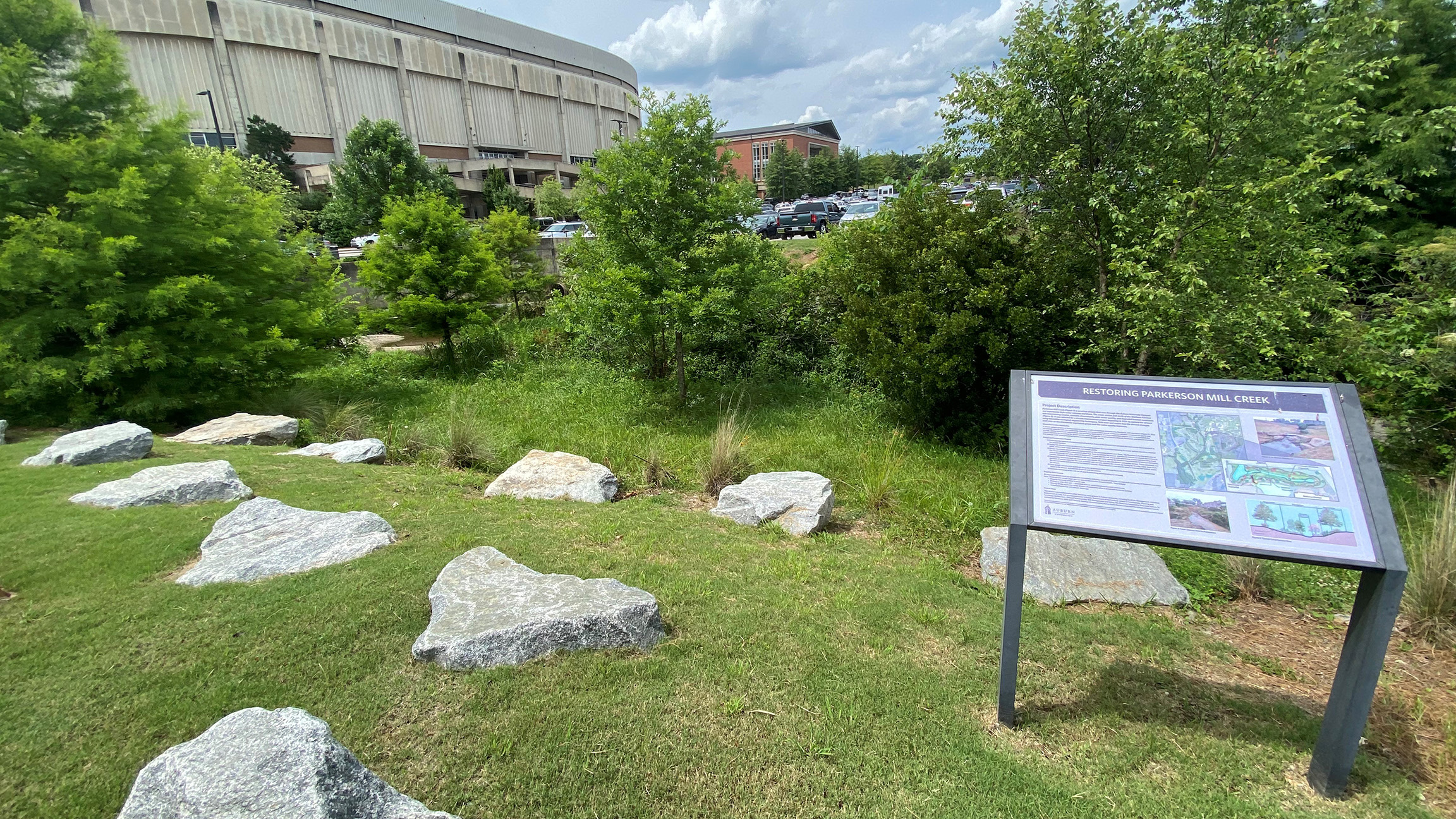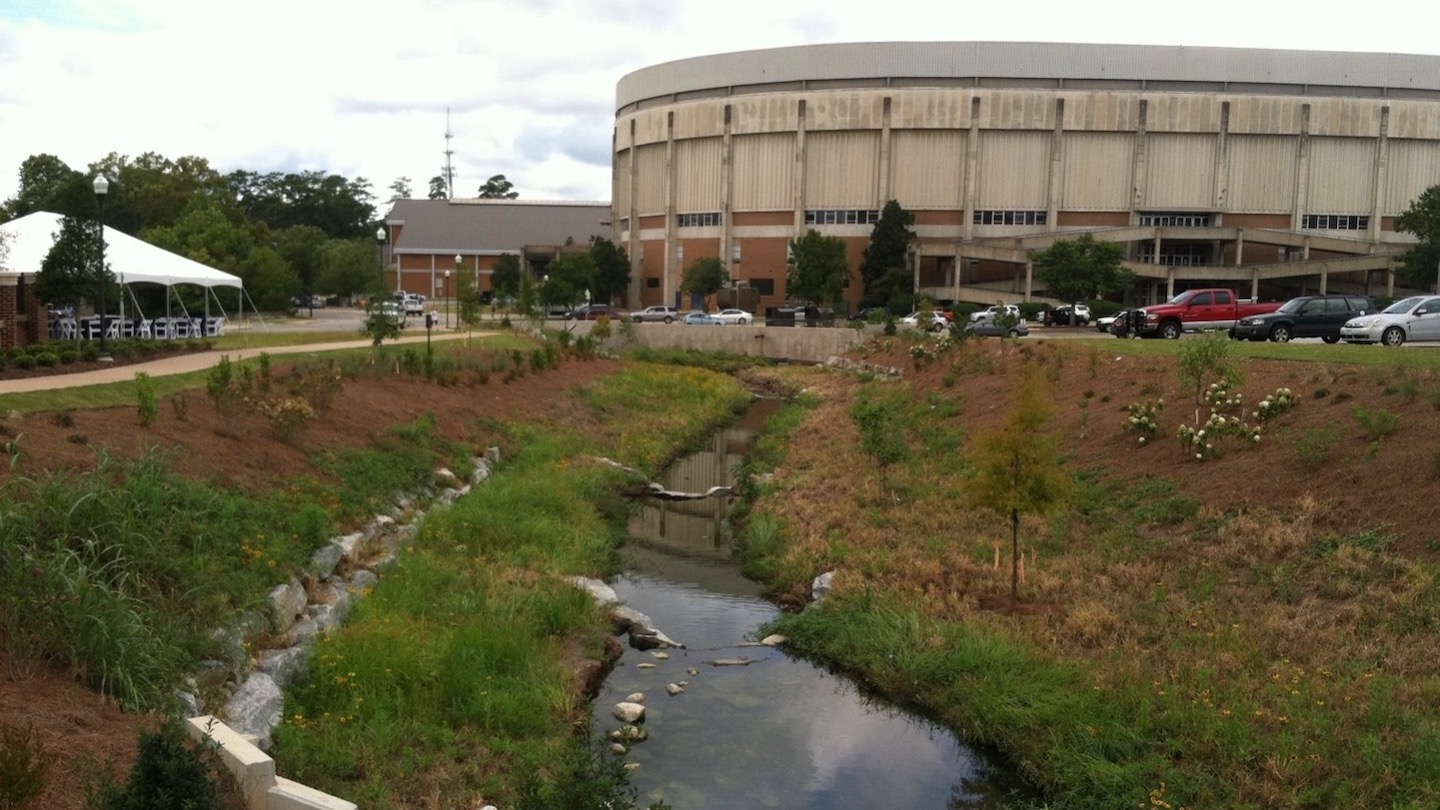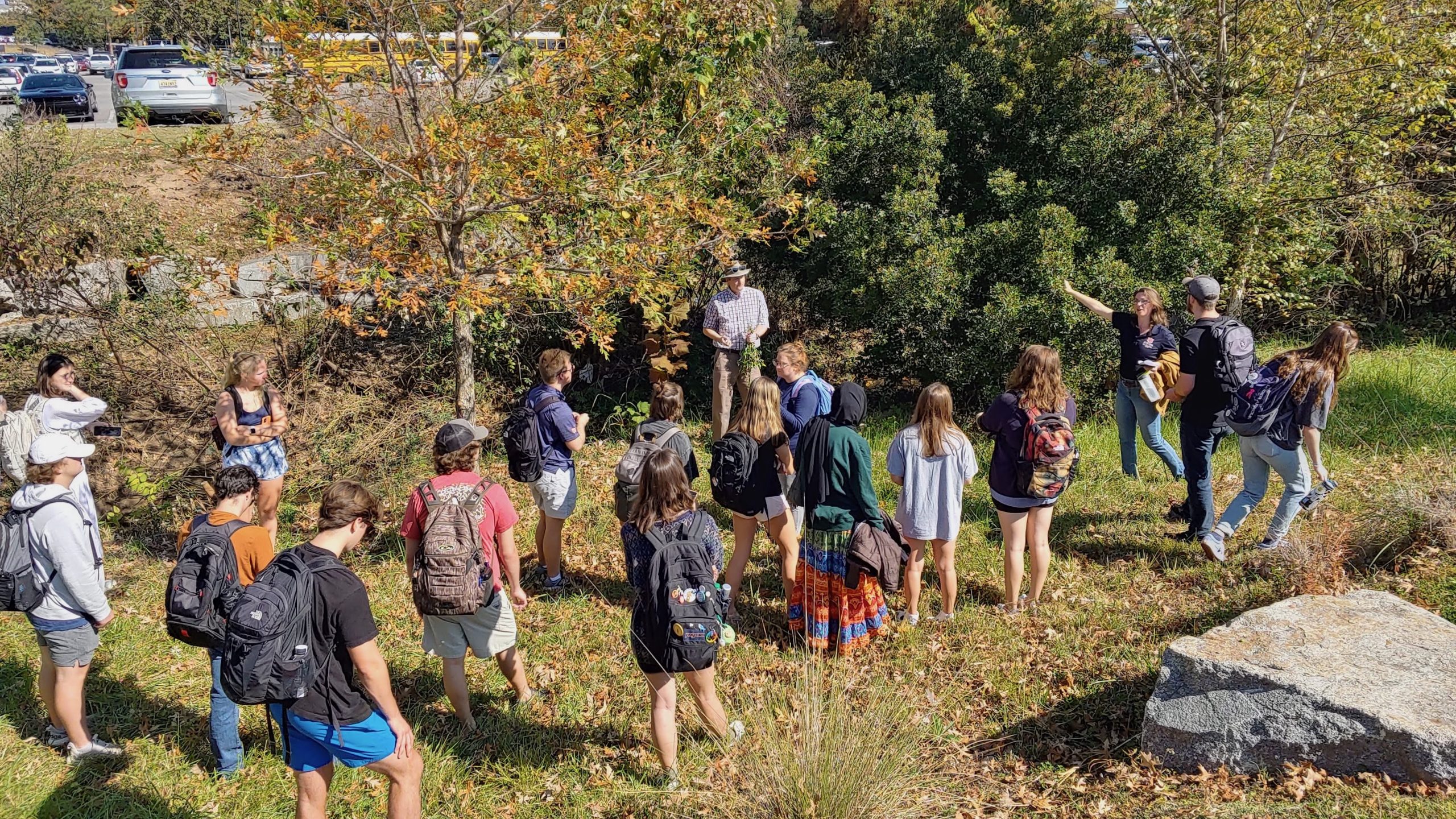THE AUWRC USES TOURS OF PARKERSON MILL CREEK RESTORATION SITE TO TEACH STUDENTS AND CITIZENS ABOUT PROTECTING WATER RESOURCES
by: Adam Newby

Parkerson Mill Creek restoration site in June 2022. Photo Credit: Rachel McGuire
Many Auburn University students walk the campus for four years and never know that there’s a named creek right under their nose. The AUWRC is changing that by offering tours of the Parkerson Mill Creek restoration site next to the Auburn Wellness Kitchen.
Two perennial tributaries join close to the Intramural Fields on campus to form the main stem of Parkerson Mill Creek. One tributary originates near Magnolia Avenue and the other originates near the CVS on S. College Street. Over the decades, the headwaters of these tributaries have been built upon and piped underground with the development of campus infrastructure. The larger tributary, the one that originates at S. College Street, now emerges from underground at the Wellness Kitchen just after it flows under Donahue Drive.

Parkerson Mill Creek at the Beard-Eaves Memorial Coliseum in 2006. Photo Credit: Eve Brantley
Parkerson Mill Creek was first listed on the State’s impaired stream list in 2008 due to pathogens. Such impairment in streams of urban areas is not uncommon due to urban stormwater runoff and municipal sewer sources. In 2014, a 300-foot section of the creek received a major overhaul and restoration along with the construction of the new Wellness Kitchen. The creek restoration was part of a new Watershed Management Plan developed in response to the creek’s impaired status in a partnership between several Auburn University entities (including the AUWRC, Facilities, and Alabama Cooperative Extension System), the City of Auburn, and the Alabama Department of Environmental Management. The restoration effort was the initial step in meeting the long-term goals of the Parkerson Mill Creek Watershed Management Plan. Those goals are:
1. Protect and enhance streams, floodplains, and wetlands to prevent flooding and mitigate erosion and sedimentation.
2. Coordinate planning and development of communities that promotes and achieves environmental and economic benefits.
3. Protect and preserve the landscapes and functions of these lands.
4. Establish and maintain existing trails and access to Parkerson Mill Creek and its tributaries where desired and feasible.
5. Promote the education of stakeholders on using practices and workshops within the Parkerson Mill Creek Watershed and use Parkerson Mill Creek as an outdoor classroom.

Parkerson Mill Creek after restoration at the new Wellness Kitchen in 2014. Photo Credit: Eve Brantley
The restored section of the creek includes a broadened floodplain that allows stormwater flows to spread out and dissipate energy. There are also in-stream structures that direct water flow into the center of the channel, thus decreasing the erosion potential of the stream bank. These structures also create habitat diversity within the stream. Native perennials, shrubs, and trees were planted along the banks and floodplain to stabilize the banks, create wildlife habitats, and combat the proliferation of invasive plant species.

AUWRC staff Adam Newby and Laura Bell Cooley speak to Auburn University students during a tour of the Parkerson Mill Creek restoration site in November 2022. Photo Credit: Miriam Wyman
The restored section also features an outdoor auditorium that can be used for outdoor instruction. Inspired by our mission to empower citizens to become active stewards of water resources, the AUWRC offers tours of the Parkerson Mill Creek restoration site to university classes and community groups. A tour of the restoration site is an excellent opportunity to learn about the important ecosystem services our urban streams provide and how local government agencies and developers can work together to maintain or restore those services when planning new development.
Auburn University and the City of Auburn continue to build on the success of the Parkerson Mill Creek restoration at the Wellness Kitchen. The University has constructed a new shared-use pathway along Parkerson Mill Creek that extends from the Wellness Kitchen to Lem Morrison Drive that meets the goals set forth in the watershed management plan. This pathway is part of the Parkerson Mill Creek Greenway planned by the University and the City to ultimately extend off campus and connect to Chewacla State Park where Parkerson Mill Creek merges with Chewacla Creek. This planned greenway reflects emerging urban development techniques that seek to keep people connected to natural ecosystems in their daily life instead of concealing them.
